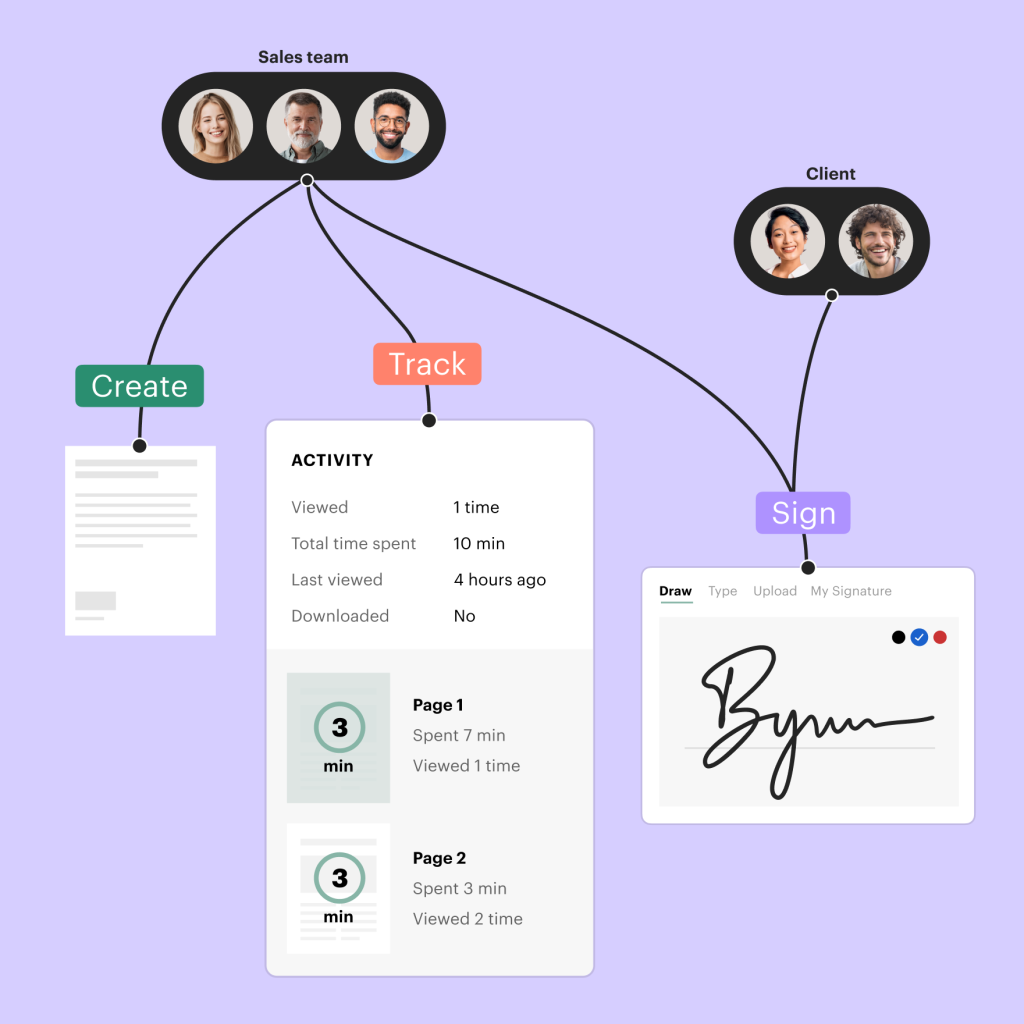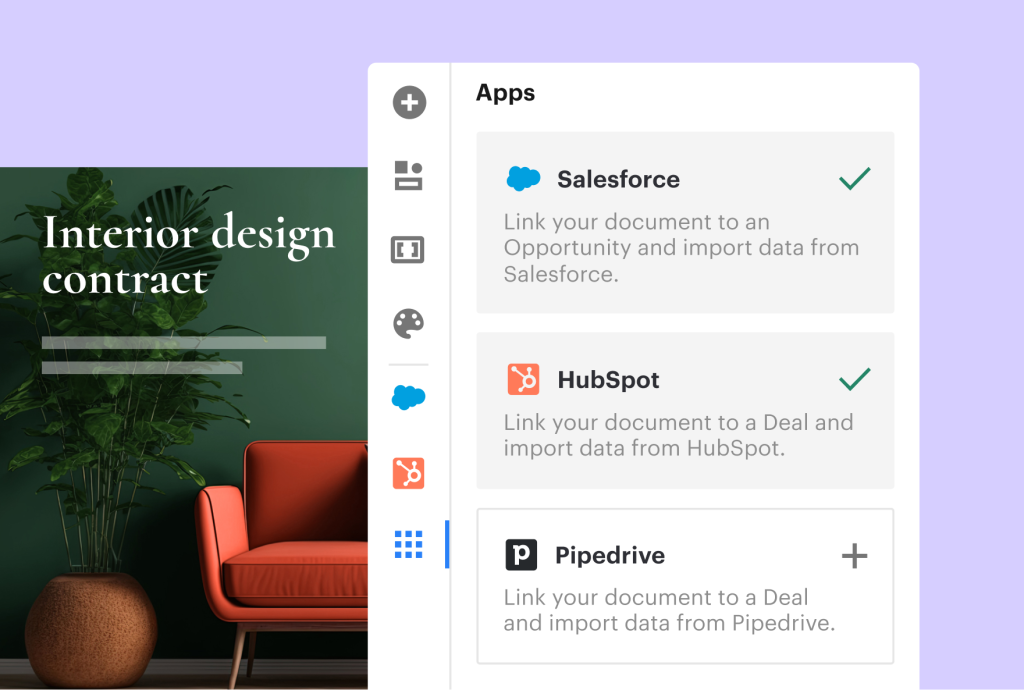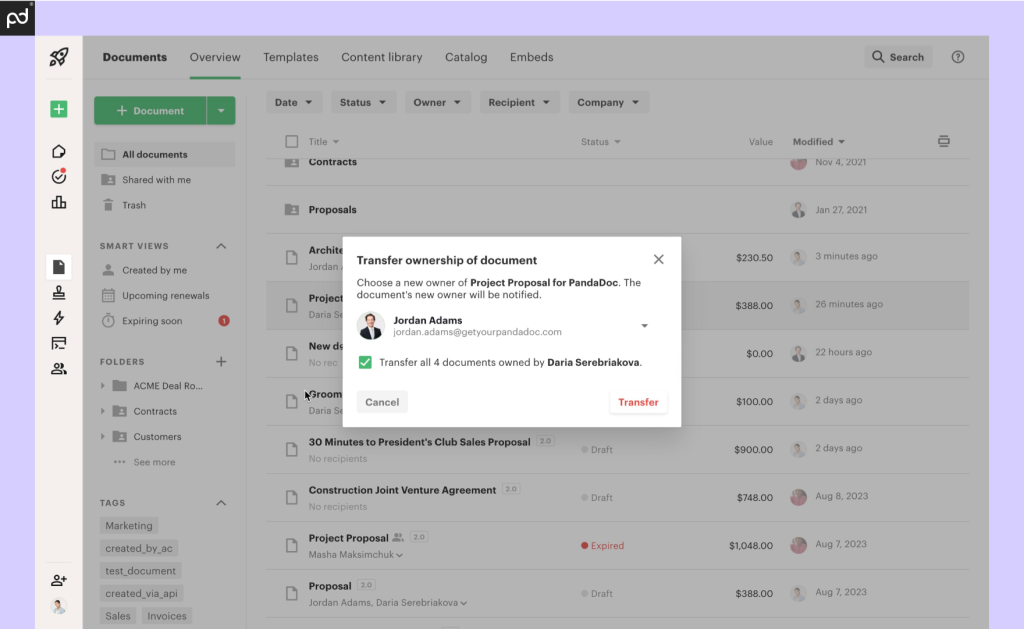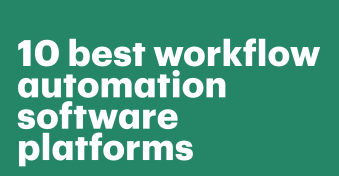The term document automation is one of those phrases that you see and read so many times in business jargon that it can almost lose its meaning.
If you’re scratching your head trying to understand what the benefits of document automation is and how the process evolved, this blog is for you.
Some days it seems that terms like document automation systems, document processing, and document automation tools have been used so much by so many business leaders that the true meaning behind the terms have become murky, almost to the point of all melding together.
Everybody wants to “create process automation”— but everyone seems to think that means spending a lot of money on the most expensive cloud-based software solution will equate to pie in the sky results.
And that’s unfortunate because underneath the confusing amount of terminology, document automation is one of the most powerful and highly available tools that companies of all sizes can and should be using every day.
In fact, if your business is not implementing document automation, you’re missing out on all the powerful benefits of document automation.

What is document automation?
Document automation refers to the process of using technology to streamline and manage documents and information within a business.
It involves the creation, generation, storage, retrieval, and distribution of documents through automated systems, often using software solutions.
This automation aims to improve efficiency, reduce human errors associated with manual processes and manual documents, ensure compliance with regulatory requirements, and facilitate easier collaboration among team members and stakeholders.
In various industries, including real estate, law firms, healthcare, document automation is crucial for enhancing productivity and operational effectiveness.
The biggest mistake companies make is thinking that document automation is something they can buy off the shelf from a huge cloud-based software solution, and set and forget it.
But that’s not how it works. Document automation is not magic.
Just because you paid a ton of money for a tool, doesn’t mean that your document workflows are magically streamlined.
You have to take time to train the system and most of all, train your employees on how to use it properly.
That’s why the key to a successful document automation system is to create and tailor a process that works for your unique business needs, ensure everyone follows the process, and continue evolving the process as your business grows.
Key benefits of document automation
1. Consistent formatting
Many of us can relate to situations where they had to draft up a new SOW and found themselves staring at dozens of previous ones, each with its own set of modifications and coming in different formats.
Finding the right “starting point” and modifying it to meet the current requirements may be tedious, but it really doesn’t have to be.
With document management software and new technologies, you always have a set of templates to use, which ensures format consistency across the board and makes all of your documents look the same.
Streamlining your workflow with all the right fields in the right places, all the important sections intact, will help with decision-making across the business.
The best part?
When you create a document using a template (like the ones available in PandaDoc!) you’ll enjoy consistent branding for all future documents – helping you boost brand recognition on every single document.
2. Faster document generation
When you use modern document automation software (for example, for contract management), it effectively takes care of time-consuming data entry tasks by pre-filling standard fields from various data sources, pulling from your company’s CRM.
For example:
- Legal addresses of the parties
- Names and titles of signers
- Contract number
- Contract date
- Up-to-date rate sheets
- Standard provisions for a particular document type
- And many others
If your document automation workflow is configured correctly, creating a clean, purpose-specific document draft becomes a matter of a couple of clicks, saving you an immense amount of time and effort.
Protip: You can create and send documents fast inside the PandaDoc template library. Explore any of the 1000+ templates available in the PandaDoc library to quickly create documents and enhance your customers’ document experience. Find the ideal template, customize it to meet your requirements, and start sending out documents swiftly.
3. Configurable custom workflows
Different types of documents go through different approval scenarios involving specific groups of reviewers, approvers, and stakeholders.
Modern workflow automation software provides the flexibility you need to build workflows of any complexity with end-to-end audit trails, easy tracking, and conditional routing.
Moving your document exchange practices to the cloud lets you digitize your key docs, do away with sluggish and error-prone manual processes, and dramatically accelerate typical document signing cycles, which is a very important prerequisite for achieving higher revenue and profitability.
4. Information security and compliance
Regardless of the nature of your business, your documents may be (and most probably are) a source of important confidential information that is not to be disclosed to third parties, which is especially crucial for companies providing financial services or working with legal documents.
All major document automation systems offer the benefit of storing your documents in a secure cloud with strict permission-based access.
The signing process is fully electronic, does not require paper copies or file copies on users’ systems, and ensures that all documents remain in a highly protected, well-organized storage.
On the compliance side, using standardized templates for digital documents that are updated on a regular basis and stored in a centralized way may help address the issue of staying consistently aligned with standards and rules that are often updated and amended by regulatory institutions and service providers.
5. Reduced risk of human error
What happens when you start working on important documents by putting them together from bits and pieces pulled from older versions or similar documents?
You may end up using inaccurate wording, missing important provisions, messing up important dates or numbers, and creating all other sorts of errors that we all tend to make in long and complex documents.
When you say you want more “scalability” for your business it starts with smarter document automation work to reduce and eliminate human error.
Any sufficiently well-built document management system takes care of formatting, the most up-to-date and approved wording, version numbers, and other small but very important elements that any reviewer can easily overlook, especially when the time to send the document is running out.
6. Improved collaboration
Modern document automation platforms go far beyond quick document assembly, convenient exchange of electronic documents, and e-signing.
One of the most important benefits of their functionality is a set of collaboration tools that let your team work on documents from any location simultaneously and get things done much faster.
The less time you spend producing your contract or specification, the better the customer experience and the higher your chance of closing the deal.
Don’t forget that faster document creation and document processing translate into more significant cost savings, as your cost per deal goes down.
7. Time savings
Document automation revolutionizes time management in critical processes like human resources, when onboarding new employees or clients. By automating repetitive tasks such as form filling and document generation, it frees up valuable time for strategic decision-making. It ensures real-time updates across all documents, which is especially useful for legal document automation, healthcare document automation, construction document automation, and more.
For example, you can significantly reduce the hours spent creating a construction bid when you have document automation in place.
With a document automation solution in place, you can effectively streamline every stage of the automation process by submitting the right document at the right time, building email sequences, capturing users’ feedback, and updating your information systems.
8. Make documents specific
Using document automation tools such as PandaDoc’s Smart Content feature enables you to customize documents tailored to your business relationships, ensuring crucial details are not overlooked.
Smart Content allows you to establish rules that automatically adjust content or fields according to your customers’ requirements.
This capability lets you personalize documents based on the recipient’s use cases, industry, and company size.
9. Data integration and auto-fill
Another powerful feature of document automation lies in its ability to integrate seamlessly with various data sources, such as Customer Relationship Management (CRM) systems or databases.
This integration enables automatic population of document fields with pertinent information, significantly reducing the need for manual data entry.
Imagine a scenario where a sales team needs to generate customized proposals for different clients.
With document automation, the system pulls client details — like names, addresses, contract terms, and pricing — from the CRM database directly into the proposal template.
This not only saves time but also ensures accuracy across all documents, as there’s no risk of human error in data input.

10. Version control
One of the standout benefits of document automation is how it handles version control.
Imagine never having to worry about whether you’re working on the latest version of a document!
With automation tools, changes made to master templates automatically update all related documents.
This keeps everything consistent and up-to-date across the board. No more hunting down the latest version or dealing with outdated information — just streamlined efficiency and peace of mind.
It’s like having a built-in safeguard against errors and confusion, making your document control a breeze.

Explore real-world use cases with document automation
Dive into firsthand accounts of how organizations tackle non-compliance, optimize pricing strategies in real-time, and ensure regulatory compliance through document automation.
Discover how PandaDoc clients streamline repetitive tasks and enhance customer satisfaction by browsing real-world case studies. Let our customer stories guide you through the benefits of document automation.
Using PandaDoc for better automation across the board
The benefits of automated document management we covered above are just the tip of the iceberg.
Switching to PandaDoc and taking full advantage of our powerful tools and vast collection of document templates will most definitely help you optimize your business processes and start spending just a fraction of the time on tasks that used to take hours or even days.
Schedule a demo to get a better understanding of our range of document automation solutions for different teams and areas of application!
Disclaimer
PandaDoc is not a law firm, or a substitute for an attorney or law firm. This page is not intended to and does not provide legal advice. Should you have legal questions on the validity of e-signatures or digital signatures and the enforceability thereof, please consult with an attorney or law firm. Use of PandaDoc services are governed by our Terms of Use and Privacy Policy.
Originally published February 28, 2023, updated September 9, 2024


